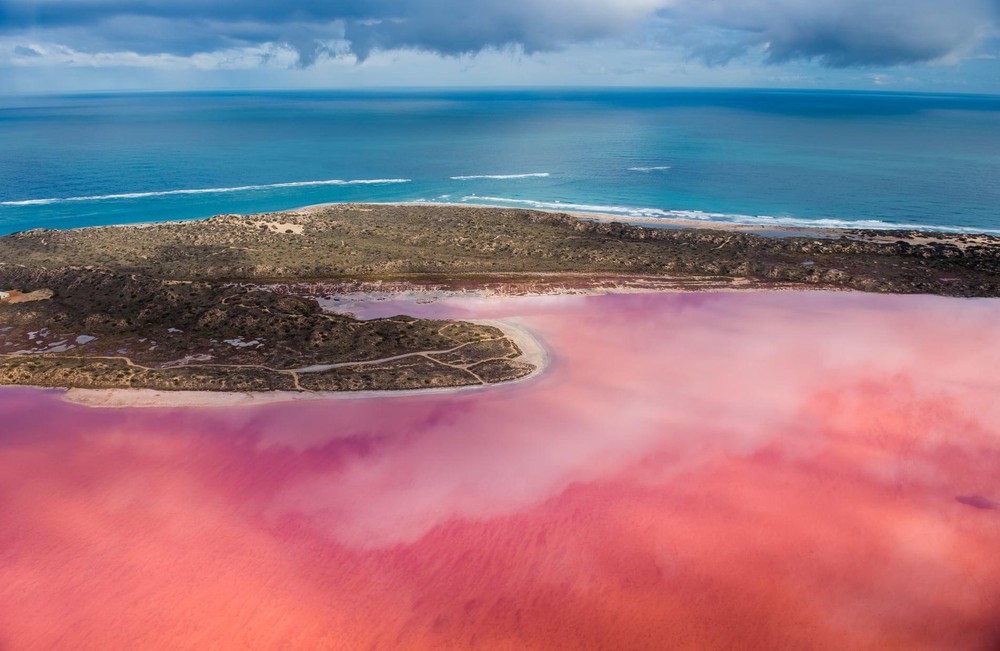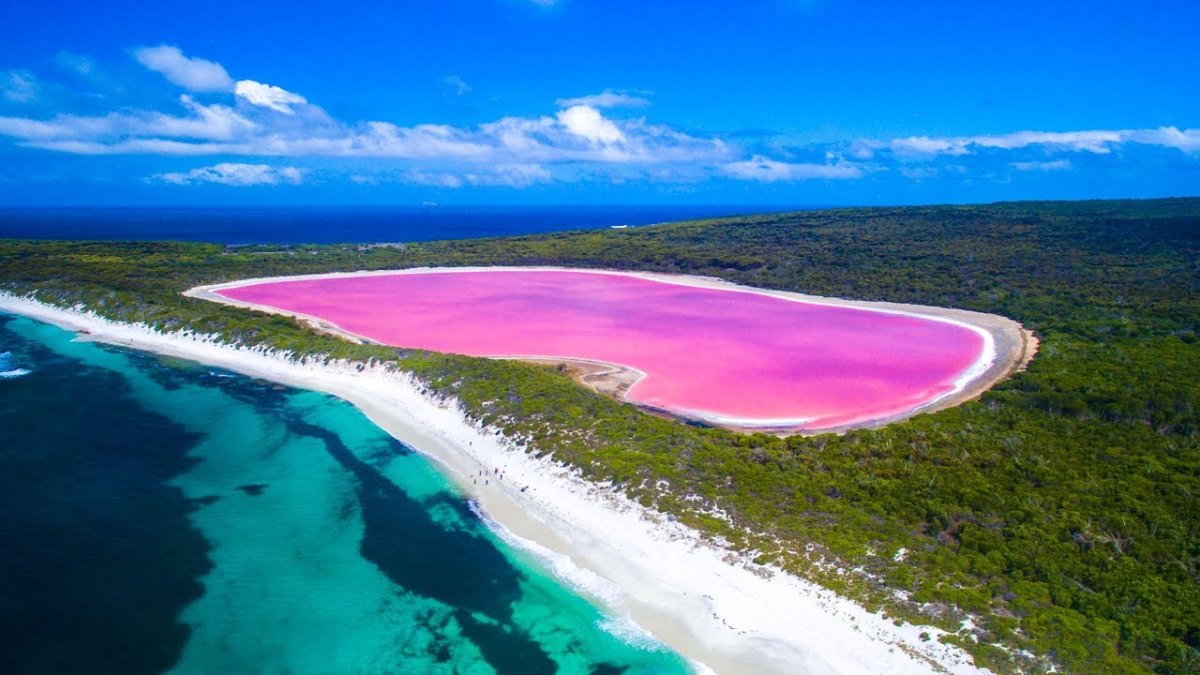In the long history of Earth, there have been numerous natural phenomena that have left humanity in awe. Among these is Lake Hillier, a natural wonder tucked away on Middle Island, part of the Recherche Archipelago in Western Australia. What makes Lake Hillier so special? It is its strikingly red-colored water, a mystery that has yet to be fully solved, captivating both scientists and tourists alike.

The Mystery of the Color
The distinctive red-orange color of the lake, which remains just as mesmerizing when contained in glass, has sparked various theories about its origin. Research indicates that this color might be attributed to the abundance of halophilic bacteria in the salt-loving algae Dunaliella salina, thriving in the lake’s sediment. Yet, no theory has fully explained the uniqueness of this color, making Lake Hillier one of the world’s most mysterious tourist destinations.

Discovery and History
Lake Hillier was discovered by Matthew Flinders in 1802, during his ascent to the highest peak of Middle Island. Since then, the lake has become an attractive spot for those interested in exploring and understanding bizarre natural phenomena. Despite its small size, roughly 600 meters in length and 250 meters in width, the lake’s unique water color has made it a standout on the global tourism map.

Tourism and Conservation
Lake Hillier attracts not just the scientific community but also many tourists. However, being located on an island that is not easily accessible, visitors wishing to admire the lake’s beauty typically have to do so through scenic flights. The Australian government and conservation organizations have made efforts to protect Lake Hillier from human interference, ensuring that its natural beauty is preserved for future generations.
Conclusion
Though years of research have passed, the mystery behind the strikingly red waters of Lake Hillier remains a significant question without an answer. This marvel not only draws the interest of scientists but also serves as an inspiration for
